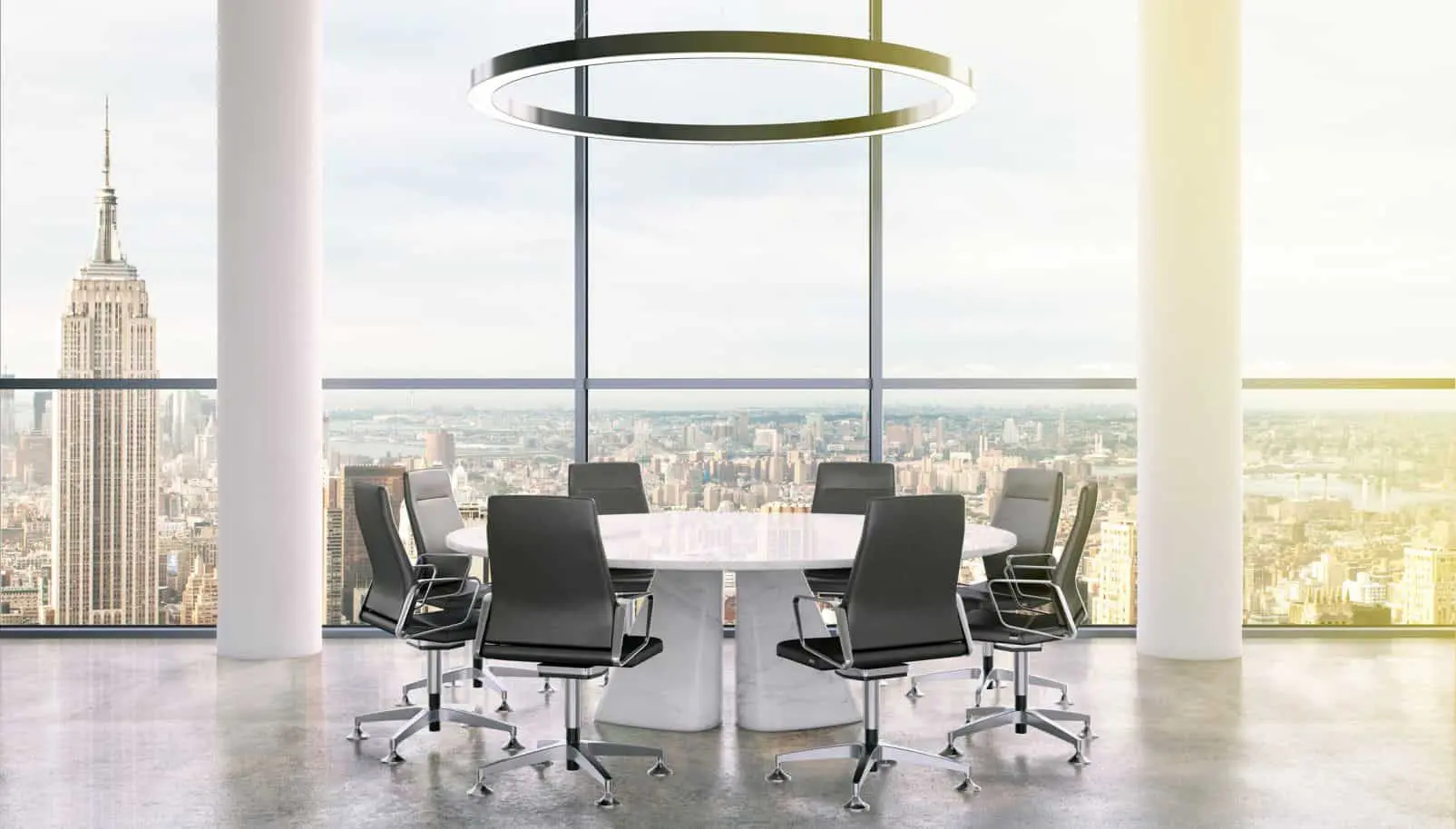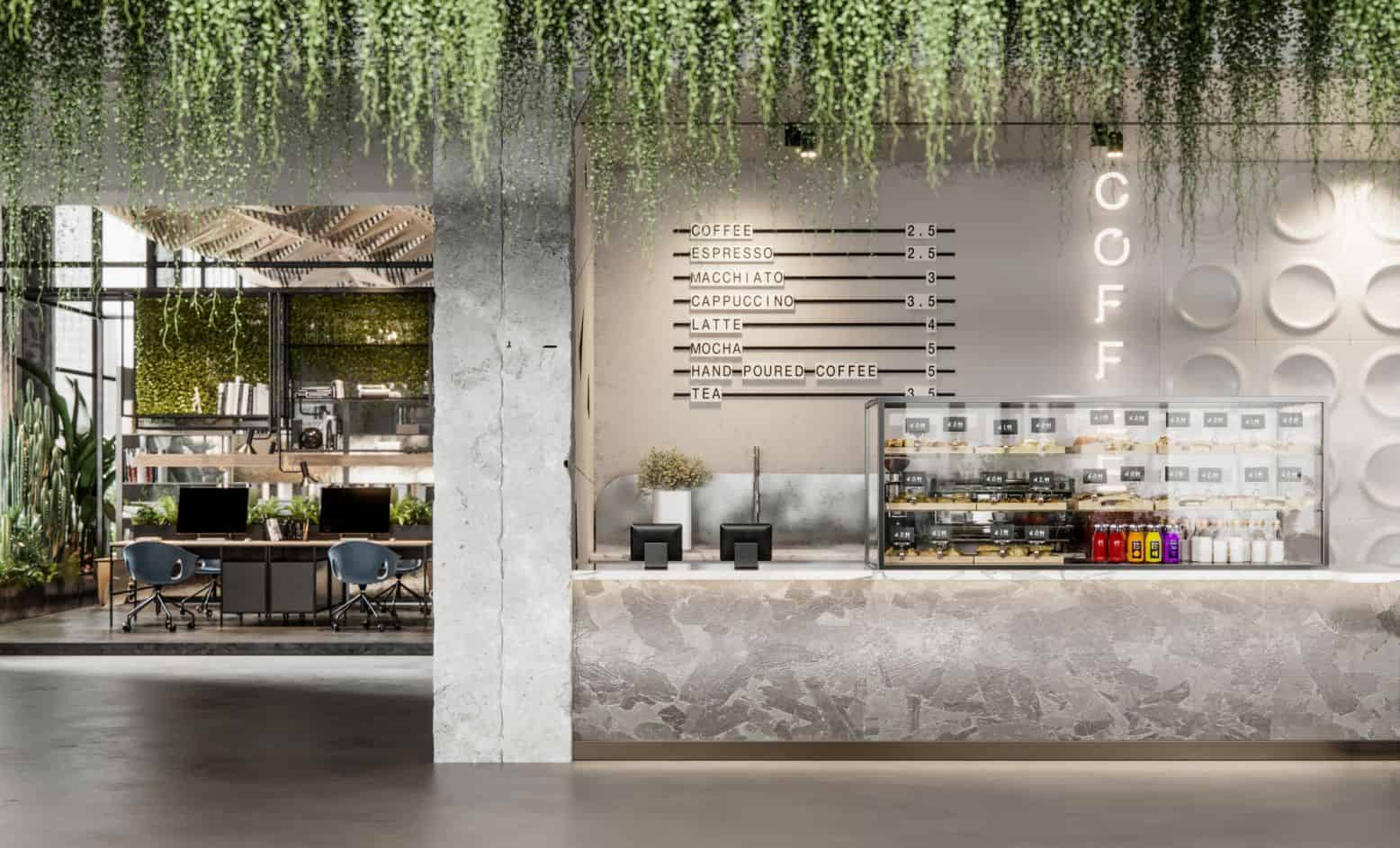
18 May Workplace In Focus: The Benefits of Biophilic Design
What is biophilic design?
Biophilic design is far more than adding plants and greenery to space: it’s about forging a restorative connection between humans and the natural environment. We all know the calming effect nature has on people – from the soothing sounds of crashing waves to the awe-inspiring visual impact of tumbling waterfalls – so it’s really no surprise that the power of nature significantly enhances the state of our physical and emotional wellbeing.
The prominence of nature within architectural expression has developed through the ages. From ancient Roman gardens and al fresco courtyard dining to the current houseplant mania trend and the green roof boom – it’s clear that building a strong connection with nature has always been fundamental to human beings. So how does this historical concept connect with modern workspace design?
Why workspaces need biophilic design
On average, Americans spend approximately 90% of their time indoors, and this startling statistic will inevitably be even higher for the office-working population. This means the majority of employees don’t benefit from fresh air or sunlight anywhere near as much as they should. Poorly designed offices can contribute towards health problems ranging from mental fatigue and increased stress levels, to high blood pressure and eye strain.
But dreaded gray box offices are quickly becoming a thing of the past. By utilizing the key principles of biophilic design, contemporary workspaces are ‘bringing the outside in’ and reversing negative effects of being cooped up indoors all day – resulting in long-term health benefits, happiness and improved concentration levels for their employees.
What are the benefits of biophilic design?
The benefits of biophilic design are experienced in a range of different ways. Whilst individual employees might take solace from improved natural lighting or feel the calming effects of flowing water and greenery, the broader organization will notice improvements in employee happiness and overall productivity levels. Some of the most notable benefits that have been recorded by experts include:
- Lowered blood pressure and heart rate
- Reduced stress hormones
- Reduced fatigue
- Improved concentration and memory levels
- Improved attentiveness
- Increased visual comfort
- Reduced boredom
- Improved comfort and perception of safety
- Increased productivity
- More eagerness to return to work and come into the office
What is biophilic office design?
Biophilic office design comes in all shapes and sizes – quite literally. Whether it’s building a local ecosystem, installing water features, planting trees, experimenting with natural textures or simply utilizing the natural light in the best way possible: effective biophilic design is fast becoming a top priority amongst contemporary businesses who want to attract, retain and build a healthy working environment for their people.
Biophilic design usually incorporates the following elements:
Maximizing Natural Light:
Encourage natural light to flow throughout your workspace. Things like tall windows, glass doors and even glass walls throughout the building will brighten up your office and help diffuse natural light throughout the space. Not every space has the luxury of natural light, so think about utilizing circadian lighting to vary color temperatures throughout the day in order to mimic natural daylight intensity levels.
Green Roofs + Terraces:
A dedicated outdoor space for your employees encourages them to take short breaks from the screen to enjoy fresh air and absorb essential vitamin D. Facebook took the sustainable green roof trend to the next level, by installing a 3.6 acre rooftop park that strategically manipulated glass and an amphitheater-style courtyard to blur the boundaries between the indoors and outdoors.
Natural Soundscapes:
Flowing water stimulates both visual and auditory senses, so features like water fountains, mini waterfalls and even streams can create a natural soundscape that connects with employees. It’s not just water that stimulates the natural connection though, recreating natural sounds like plants rustling, crackling fire and birdsong are all sounds that calm the senses and invoke powerful emotional responses.
Earthy Materials:
Raw, earthy textures found in the natural patinas of wood, metals and stone can ignite the senses and stimulate a strong connection between employees and their surroundings. By utilizing woods with heavy grains and knotting, or opting for luxurious marbles with striking striations: you can imbue a real sense of natural strength and power that manmade materials struggle to replicate.
Natural Smells:
Of all the senses, smell is most often cited to invoke powerful emotional responses and memories. One of the most simple ways to introduce biophilia to your workspace is by introducing the scents of flowers, plants and herbs. The soothing scent of eucalyptus or lavender can momentarily distract the senses to invoke contemplative feelings of appreciation and serenity.
London-based vertical farming firm Square Mile Farms have taken this idea one step further: implementing ‘office-grown salad’ farms into workspaces so staff can enjoy growing their own salads, smelling the fresh herbs and even taking them home to cook with at the end of the day!
Plants + Greenery:
Interior design trends have been leaning towards greenery for years now and indoor plants are more popular than ever. We all love the aesthetic of a gorgeous Swiss cheese plant, but they come with far more important benefits: plants improve air quality, boost ventilation and even reduce toxin levels in the air. Living walls are a creative way to implement greenery that delivers an alternative dimension to indoor spaces, pushing the boundaries of the ‘four walls’ we typically associate with being inside.
Get in Touch
Want to know how biophilic design can transform your workspace? Get in touch and speak with an award-winning WELL AP workspace designer today.
























